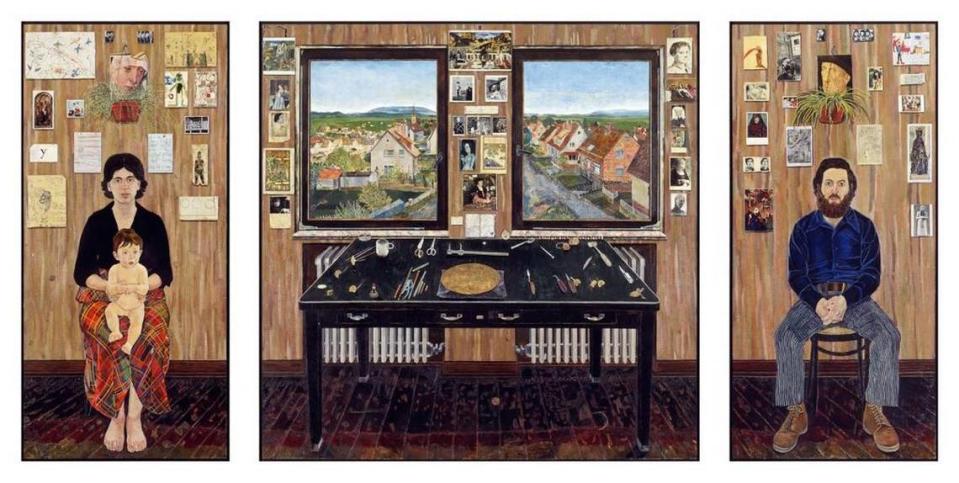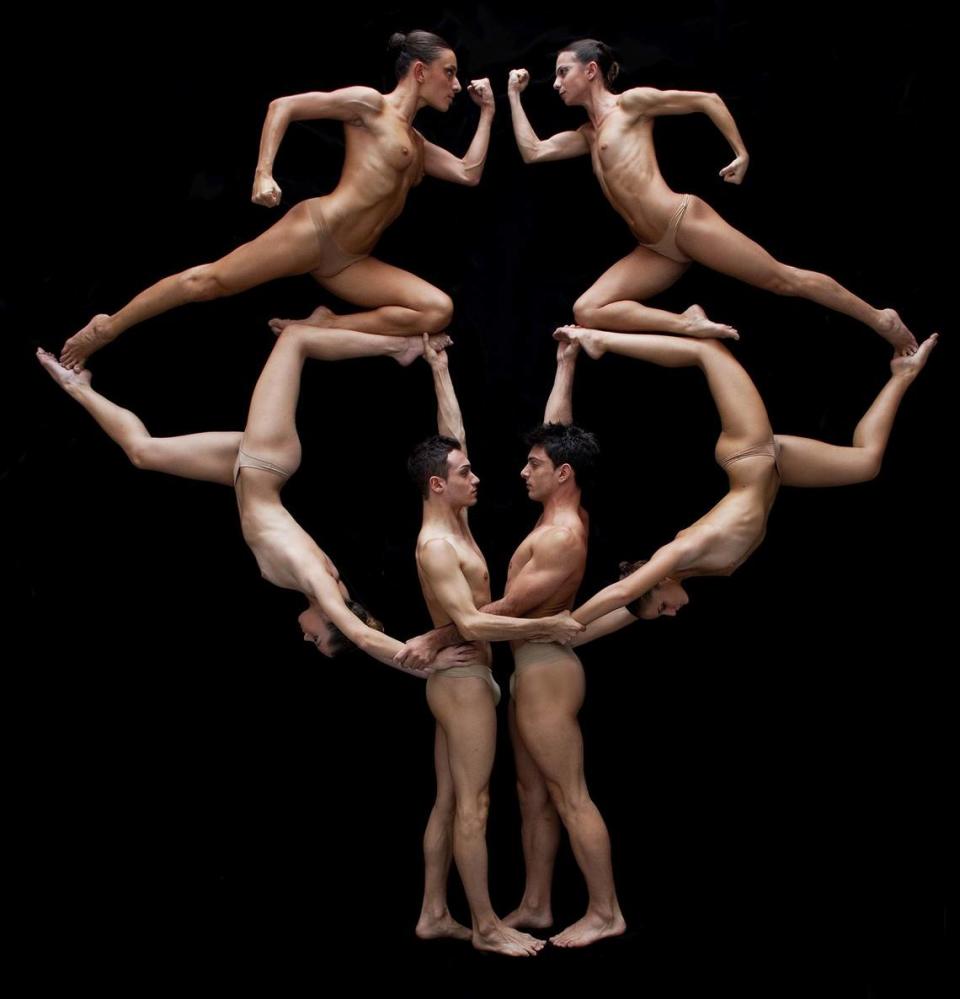This difficult sonata is rarely played. It’s coming to a KC concert hall, with a twist
- Oops!Something went wrong.Please try again later.
- Oops!Something went wrong.Please try again later.
- Oops!Something went wrong.Please try again later.
Charles Ives’ “Concord” Piano Sonata is one of the most brilliant works of American classical music. But with a length of almost an hour and demanding music for both pianist and audience, it’s not exactly a concert hall staple.
I still kick myself for missing local pianist Robert Pherigo’s performance of the “Concord” Sonata a few years ago. I thought I’d never have a chance to hear it live again.
Mirabile dictu, the Harriman-Jewell Series will present pianist Simone Dinnerstein with “The Eye Is the First Circle,” her multimedia conception of the “Concord” Sonata, on Feb. 3 at the Folly Theater.
The four movements of the sonata are meditations on New England transcendentalist writers: Emerson, Hawthorne, the Alcotts and Thoreau. Dinnerstein has taken Ives’ highly personal music to tell her own story.
“The whole program is a work of devised theater,” Dinnerstein said. “I wanted to explore the idea of how we come to be ourselves, what forms us. What things do we take from our surroundings and what shapes us to be artists.”
The main inspiration for “The Eye Is the First Circle” is the monumental “Fulbright Triptych” created by Dinnerstein’s father, the artist Simon Dinnerstein.
“He started the triptych in 1969 when he had a Fulbright to study printmaking in Germany,” Dinnerstein said. ”The middle part of the triptych is his work table with all of the different instruments that were needed to do engraving. There’s a copper plate with a depiction of a garden in Brooklyn where they came from. On the walls are depicted lots of postcards of great works of art by painters that influenced my father.
“My mother was an early childhood teacher, so there’s a lot of children’s works on the walls by students of hers. It took my father almost three years to paint this painting, and when they came back from Germany, I was born, so I was incorporated into the triptych.”

An image of the painting will be projected on the back wall of the stage while Dinnerstein performs. But what’s the Ives connection?
“I decided to use Charles Ives’ ‘Concord’ Sonata, which is another monumental work where Ives was trying to depict the thoughts of the transcendentalist writers in textless music,” Dinnerstein said. “I thought the juxtaposition of Ives trying to make sense of his world through the people that influenced him, and my father making sense of his world through the triptych and me, using those to make another world, would be really interesting.”
Dinnerstein says the “Concord” is some of the most challenging music she’s ever performed, and that’s saying something from a woman who is known for her performances of everything from the Goldberg Variations to Rhapsody in Blue.
“It’s so difficult,” Dinnerstein said. “It’s a piece that I was very scared of learning. I think had there not been a pandemic, I probably wouldn’t have learned it because I had a lot of time to be at home working on it. It’s such a mishmash of romanticism and avant-garde and Americana.”
Ives was doing sampling long before hip-hop. In the “Concord” Sonata you can hear snippets of “Columbia, Gem of the Ocean,” “Massa’s in De Cold Ground,” Wagner’s “Lohengrin” and Beethoven’s Fifth Symphony and especially his “Hammerklavier” sonata, which Ives quotes in every movement of the “Concord.”
One of the other delightful eccentricities of the work is that Ives uses a flute only in the final few pages.
“It’s about a 50-minute long sonata, so the poor flutist has to wait forever and ever,” Dinnerstein said.
Dinnerstein didn’t want to use a flutist because she said “The Eye Is the First Circle” is about her development as an artist, so she decided to play the flute ”part herself … but not on a flute.
“I had an idea to use a very interesting electronic instrument, which is called the Haken Continuum, which almost sounds like a theremin,” Dinnerstein said. “By moving your hand in different ways, you can create different kinds of effects. So I’ve recorded the flute part with that instrument.”
The “Concord” Sonata is well worth the effort of the audience with Ives’ sometimes daunting, but also ecstatic, entertaining and downright beautiful music.
“You can hear the European classical influence in it, but you also hear his embrace of Americana,” Dinnerstein said. “You can hear parts that sound like marching bands, parts that sound like rags. Yes, there are parts that are dissonant, but but the overall picture is of the wondrous nature of our world, and I think that’s what the transcendentalists were talking about.”
7 p.m. Feb. 3. Folly Theater, 300 W. 12th St. $12.50-$90. 816-415-5025 or hjseries.org.

No Gravity
In addition to the New England transcendentalist poets, the Harriman-Jewell series is also giving us a taste of Dante this week. The series will take us from the Inferno to Paradise when the Italian dance ensemble No Gravity performs “Divine Comedy” Jan. 31 at the Folly Theater.
Emiliano Pellisari, No Gravity’s choreographer, is steeped in Renaissance art and stage design, which has informed his conception of “Divine Comedy.” With a Felliniesque sensibility and jaw-dropping aerial arts, this promises to be a Cirque du Soleil-like take on Dante’s medieval epic.
The transcendental poets and Dante in the same week, Harriman-Jewell Series? Now you’re just showing off.
7 p.m. Jan. 31. Folly Theater. $12.50-$90. 816-415-5025 or hjseries.org.
City in Motion — Modern Night at the Gem
City in Motion has been one of Kansas City’s stalwart dance companies since 1985. The company will present “Modern Night at the Gem” Feb, 3 at the Gem Theater. City in Motion has always been dedicated to performing dance by contemporary choreographers, but the Gem program will focus solely on local choreographers. Afterward, there will be a reception with light appetizers at Vine Street Brewing, with beverages available for purchase. Try the Jazzman dark lager or Willie Bobo blonde ale.
7:30 p.m. Feb. 3. Gem Theater, 1615 E. 18th St. $18-$25. cityinmotion.org.
Pamela Frank with the Kansas City Symphony
As we count down to Michael Stern’s final concert as the Kansas City Symphony’s music director, we should savor every one of his remaining performances. Feb. 2 to 4 at Helzberg Hall, he’ll lead the symphony in a commissioned work, as well as music by Britten and Beethoven.
The concert will start with “Both,” a work commissioned from Shelley Washington. The Kansas City native draws on jazz, rock and American folk for her raucous music. Also on the program is Britten’s atmospheric “Four Sea Interludes From Peter Grimes,” music that will have you tasting the salt air. And Pamela Frank, a Kansas City favorite, will perform Beethoven’s brilliant and always popular Violin Concerto.
8 p.m. Feb. 2 and 3 and 2 p.m. Feel. 4. Helzberg Hall, Kauffman Center for the Performing Arts. $25-$99. 816-471-0400 or kcsymphony.org.
Störling — Underground
Congratulations to Störling Dance Theatre for its 16th annual performance of “Underground,” which will take place Feb. 1 and 2 at the Muriel Kauffman Theatre. This ballet, perfect for the whole family, depicts the tragedy and heroism of the Underground Railroad. Störling’s commitment to telling this important story every year is commendable.
7:30 p.m. Feb. 1 and 2. Muriel Kauffman Theatre, Kauffman Center for the Performing Arts. $25-$88. storlingdance.org.
You can reach Patrick Neas at patrickneas@kcartsbeat.com and follow his Facebook page, KC Arts Beat, at www.facebook.com/kcartsbeat.

